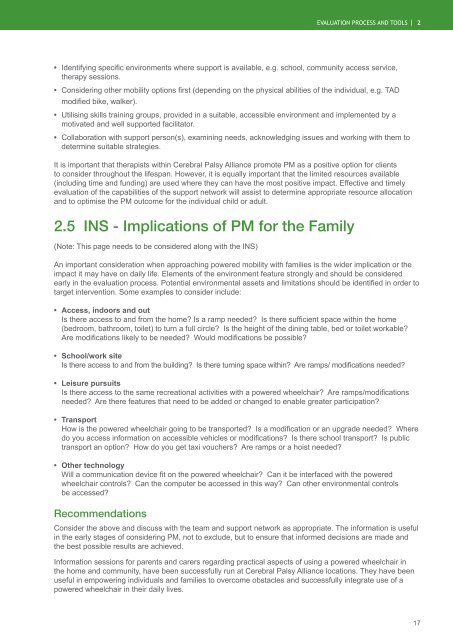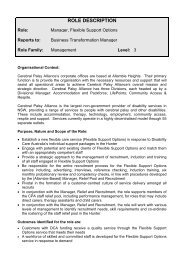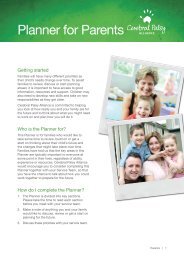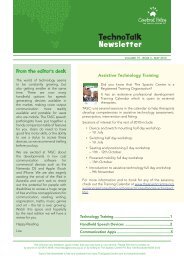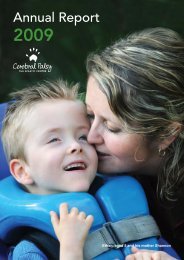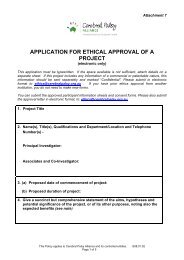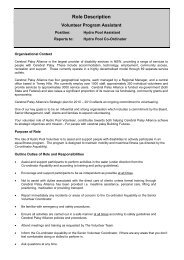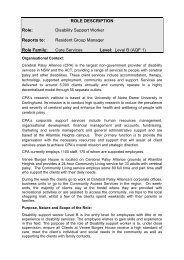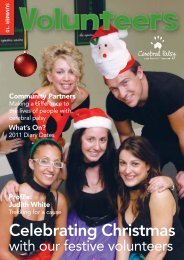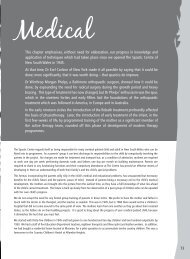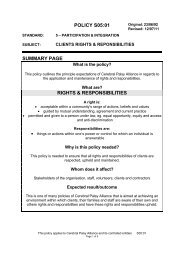Powered Mobility Manual - Cerebral Palsy Alliance
Powered Mobility Manual - Cerebral Palsy Alliance
Powered Mobility Manual - Cerebral Palsy Alliance
- No tags were found...
Create successful ePaper yourself
Turn your PDF publications into a flip-book with our unique Google optimized e-Paper software.
evaluation process and tools | 2• Identifying specific environments where support is available, e.g. school, community access service,therapy sessions.• Considering other mobility options first (depending on the physical abilities of the individual, e.g. TADmodified bike, walker).• Utilising skills training groups, provided in a suitable, accessible environment and implemented by amotivated and well supported facilitator.• Collaboration with support person(s), examining needs, acknowledging issues and working with them todetermine suitable strategies.It is important that therapists within <strong>Cerebral</strong> <strong>Palsy</strong> <strong>Alliance</strong> promote PM as a positive option for clientsto consider throughout the lifespan. However, it is equally important that the limited resources available(including time and funding) are used where they can have the most positive impact. Effective and timelyevaluation of the capabilities of the support network will assist to determine appropriate resource allocationand to optimise the PM outcome for the individual child or adult.2.5 INS - Implications of PM for the Family(Note: This page needs to be considered along with the INS)An important consideration when approaching powered mobility with families is the wider implication or theimpact it may have on daily life. Elements of the environment feature strongly and should be consideredearly in the evaluation process. Potential environmental assets and limitations should be identified in order totarget intervention. Some examples to consider include:• Access, indoors and outIs there access to and from the home? Is a ramp needed? Is there sufficient space within the home(bedroom, bathroom, toilet) to turn a full circle? Is the height of the dining table, bed or toilet workable?Are modifications likely to be needed? Would modifications be possible?• School/work siteIs there access to and from the building? Is there turning space within? Are ramps/ modifications needed?• Leisure pursuitsIs there access to the same recreational activities with a powered wheelchair? Are ramps/modificationsneeded? Are there features that need to be added or changed to enable greater participation?• TransportHow is the powered wheelchair going to be transported? Is a modification or an upgrade needed? Wheredo you access information on accessible vehicles or modifications? Is there school transport? Is publictransport an option? How do you get taxi vouchers? Are ramps or a hoist needed?• Other technologyWill a communication device fit on the powered wheelchair? Can it be interfaced with the poweredwheelchair controls? Can the computer be accessed in this way? Can other environmental controlsbe accessed?RecommendationsConsider the above and discuss with the team and support network as appropriate. The information is usefulin the early stages of considering PM, not to exclude, but to ensure that informed decisions are made andthe best possible results are achieved.Information sessions for parents and carers regarding practical aspects of using a powered wheelchair inthe home and community, have been successfully run at <strong>Cerebral</strong> <strong>Palsy</strong> <strong>Alliance</strong> locations. They have beenuseful in empowering individuals and families to overcome obstacles and successfully integrate use of apowered wheelchair in their daily lives.17


